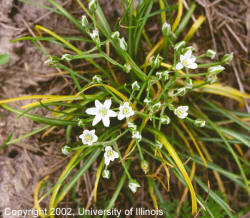|
COLUMN
 Biting
Gnats Have Returned Biting
Gnats Have Returned
By John Fulton
 Send a link to a friend
Send a link to a friend
[May 16, 2014]
Call them buffalo gnats, black flies,
and other unmentionable names, but they have returned. The small
flies, or gnats, are hatched in clean, running water. This is one
indicator our water protection plans are succeeding. They will
continue to hatch until water temperatures hit about 75 degrees.
They will also travel up to 10 miles in search of a food source,
meaning blood.
|
|
 These insects can produce serious welts when they decide to
bite. They tend to be worse during the day, and are seldom a
problem inside buildings. In addition to people, they tend to
attack birds. Young poultry and wild birds are especially
vulnerable. These insects can produce serious welts when they decide to
bite. They tend to be worse during the day, and are seldom a
problem inside buildings. In addition to people, they tend to
attack birds. Young poultry and wild birds are especially
vulnerable.
Control is difficult. Sprays of malathion, permethrin, or
bifenthrin will help with controlling the buffalo gnats when
outdoor activities must be held in infested areas. Dusts of
permethrin will also help with outside poultry operations.
Repellents of DEET, citronella, vanilla, and some of the other
plant based repellents may also provide some relief. Remember,
only the females bite and the males swarm your face. When the
bite occurs, a chemical is injected to help with blood flow.
This is often the reason for the painful welts, usually on the
face. Children also seem to be bitten, and affected, more than
adults. The gnats seem to be attracted to white clothing. Navy
blue seems to be the least favorite color of the buffalo gnat.
Garden Planting
We are in the planting time for warm-loving vegetables, which is
May 10 through June 1. Of course, the weather has been slow to
cooperate this year, and warm-loving may be a misnomer with the
cool weather this week. Warm season vegetables include Lima
beans, cucumber, eggplant, melons, pepper plants, sweet potato
slips, pumpkins, and squash. You can also put out successive
plantings of snap beans, beets, carrots, and sweet corn to
extend the season.

Master Gardener Plant Sale Reminder
Due to the late spring, the Master Gardeners rescheduled their
annual plant sale for this Saturday, May 17. Hours will be 9:00
a.m. to noon, and the sale will be held in the Special Events
Building at the Logan County Fairgrounds. Master Gardeners have
been busy with dividing plants. They will offer perennials,
annuals, heirloom tomatoes, peppers, ornamental grasses, and
houseplants at the sale.
[to top of second column] |


Star of Bethlehem
Star of Bethlehem is a weed that looks like wild onion or
garlic, but doesn't have the odor. It can also present a small
white flower. It grows from small bulbs, so tilling an infested
area is not a good idea. Control is difficult. Traditional lawn
weed herbicides donít control it very well. Recommendations have
been repeated Roundup use, use of Gramoxone (paraquat), or one
of the three-way broadleaf weed mixes. There is hope, at least
in turf, from Kansas State University: ďA study from the
University of Tennessee showed that Dismiss (sulfentrazone) gave
excellent control of Star-of-Bethlehem with a single
application. Other products with sulfentrazone such as Q-4 and
Surge may need repeat applications. On the homeowner side,
Spectracide Weed Stop 2X contains sulfentrazone but will require
repeat applications. Another second study from Virginia Tech
showed 96% control of star-of-Bethlehem one month after
treatment by using Quicksilver, a formulation of carfentrazone
at the rate of 4 fl. oz per acre. Quicksilver is a commercial
only product, and therefore is not available to homeowners.
However, both Speed Zone and Weed Free Zone contain
carfentrazone and may have activity. Remember to add a
spreader-sticker. (WU)Ē
[By
JOHN FULTON,
University of Illinois
Extension director for Logan, Menard and Sangamon counties] |